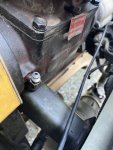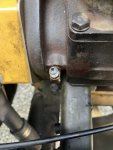So I have oil contamination in my dryer / the compressor is prob due for a rebuild or replacement . While I was reading up on the oil in dryer stumbled across some big rig sites and there was a post stating how most compressors will push oil due to 3 things , Blocked / restricted air intake , block or restricted oil return , or its just old . I reviewed TM's and visually looked at my compressor and only see an engine oil supply no return ? I wonder if this is a reason these seem to pump oil a lot aka maybe they are getting so hot and oil temps in them spike. I know it has in and out coolant for overheating , but again if the oil stays as old oil I'm sure lubrication proprieties go away . Just curious what the experts may know
Last edited:






